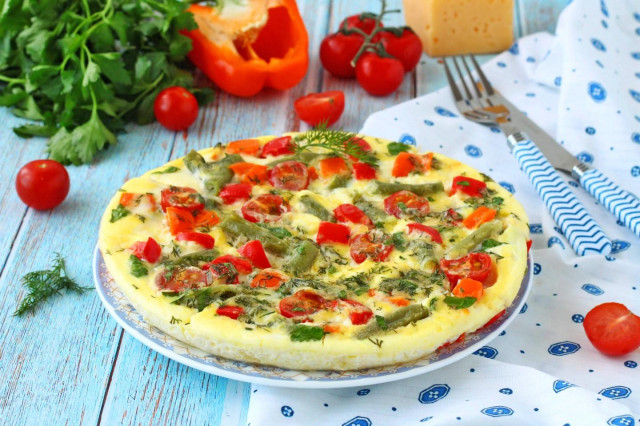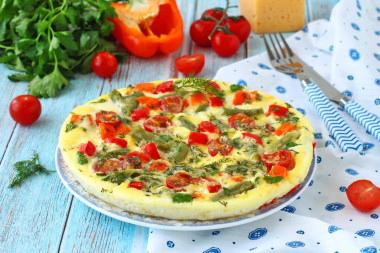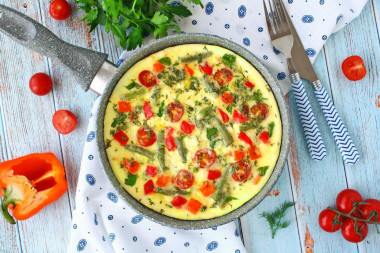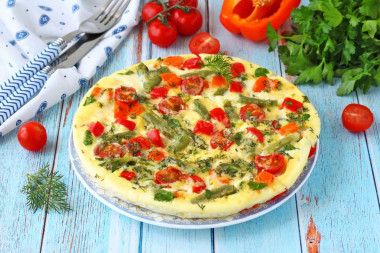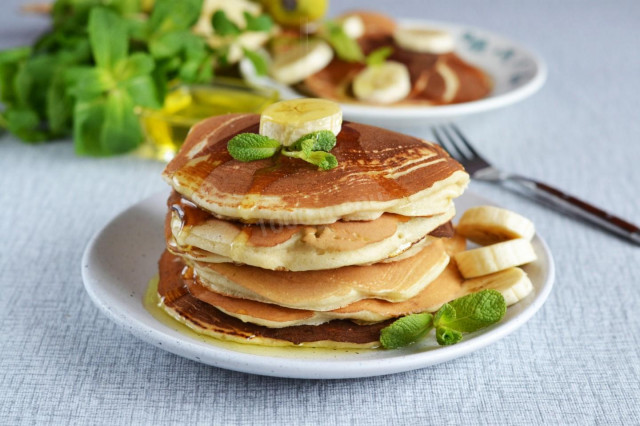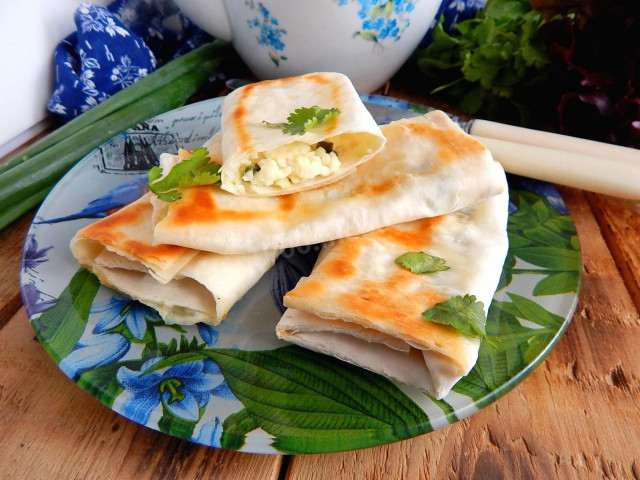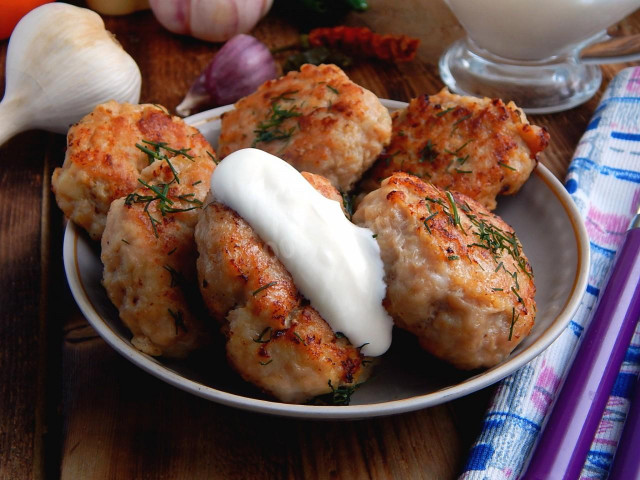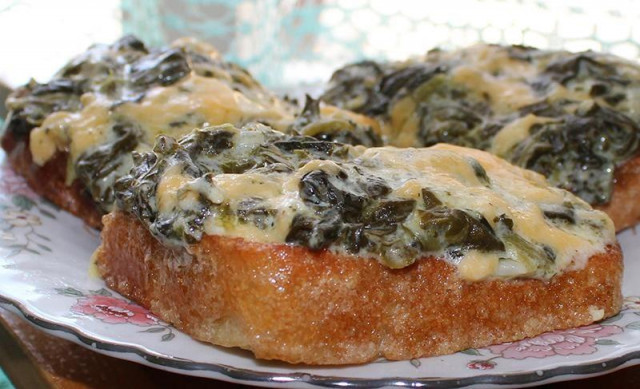Composition / ingredients
Step-by-step cooking
Step 1:
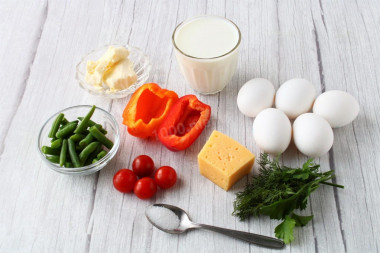
How to make an omelet with vegetables, cheese and herbs? Prepare the necessary ingredients. Instead of cherry, you can take ordinary tomatoes. Greens will suit any taste. Cheese, too, use the one you like best.
Step 2:
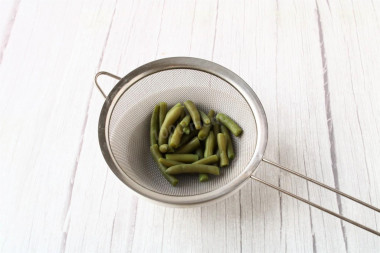
String beans are suitable both fresh and frozen. Dip the beans in boiling water. Blanch over moderate heat for about 5 minutes. Flip the beans on a sieve to drain the water.
Step 3:
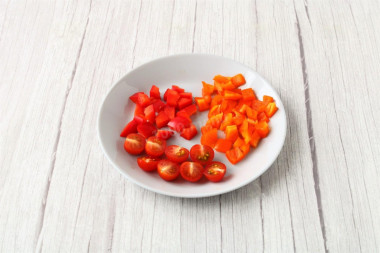
Wash the bell peppers and tomatoes, dry them. Pepper can be taken in one or more colors. Cut the pepper into small cubes. Choose ripe tomatoes, but not overripe, with a dense skin, so that when slicing and cooking they retain their shape. Cut the cherries into halves or quarters, depending on their size.
Step 4:
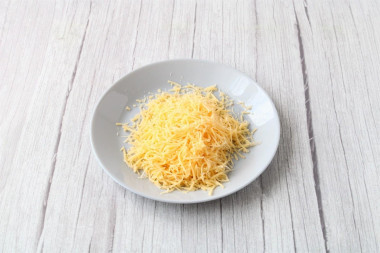
Chop the cheese on a medium grater.
Step 5:
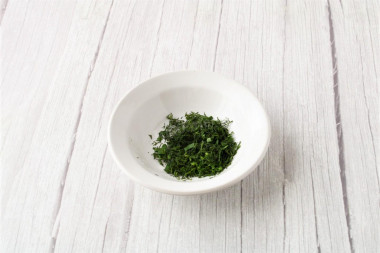
Wash the greens, dry them, chop them finely.
Step 6:
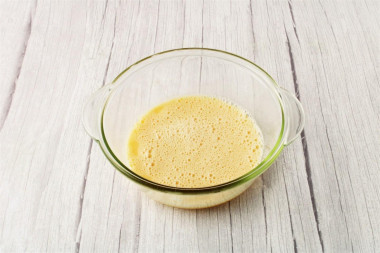
Beat eggs with a fork until smooth.
Step 7:
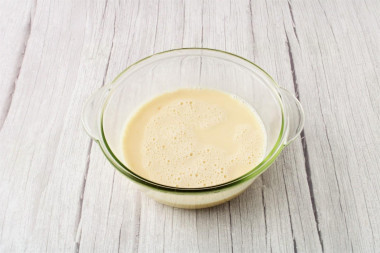
Pour in the milk, mix well.
Step 8:
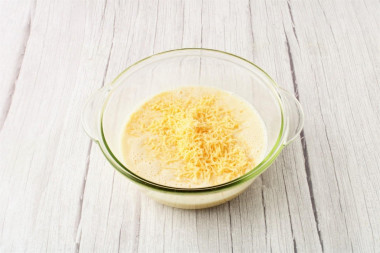
Add grated cheese to the egg-milk mixture and mix.
Step 9:
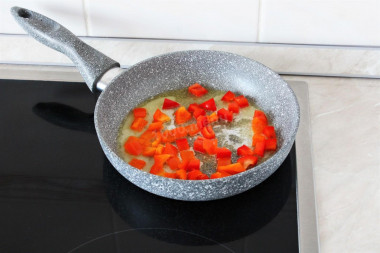
Melt the butter in a frying pan, put the cubes of bell pepper. Fry the pepper on moderate heat for about 5 minutes, stirring.
Step 10:
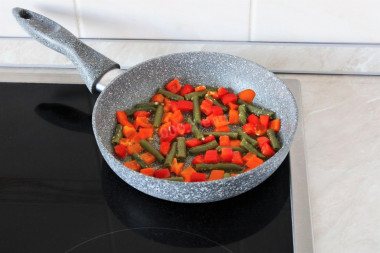
Add the string beans, stir. Fry the vegetables for a couple more minutes. They should be almost soft, but not overripe. Vegetables can be slightly salted. When adding salt, take into account the taste of the cheese used, so that the omelet does not get too salty.
Step 11:
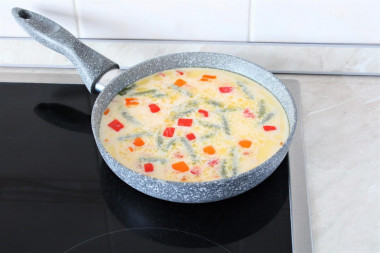
Pour the omelet mixture over the vegetables in the pan.
Step 12:
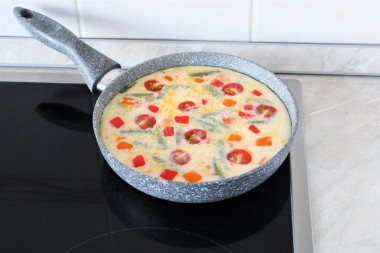
Put the chopped tomatoes in the omelet.
Step 13:
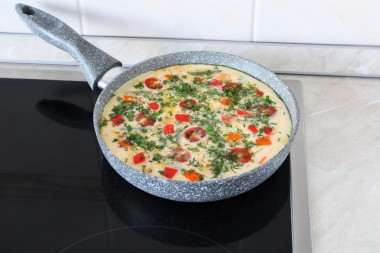
Sprinkle the omelet with herbs on top.
Step 14:
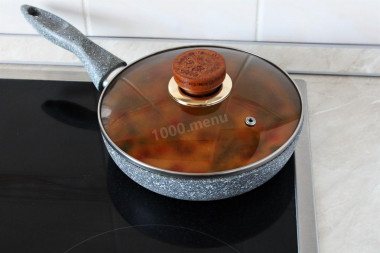
Cover the pan with a lid. Cook the omelet on a slightly lower than medium heat so that it is fried evenly. With strong heating, the bottom of the omelet will burn, and inside it will not be ready yet. The cooking time will depend on the diameter of the frying pan used. The higher the omelet, the longer it will take. On average, it takes 10-15 minutes. The diameter of my frying pan is 20 cm.
Step 15:
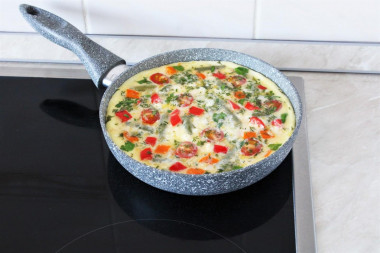
When the egg mixture thickens and becomes stable, remove the pan from the stove.
Step 16:
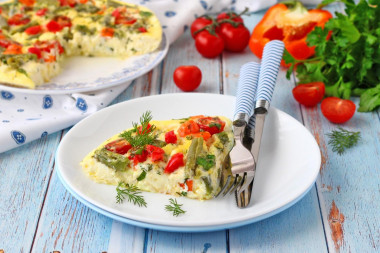
You can serve the omelet both warm and cold. Bon appetit!
How do I know if an egg is fresh? Break it into a separate container. First of all, there should be no unpleasant smell. The protein of fresh eggs will be transparent and clean. The yolk should not spread and will be shiny, convex, homogeneous.
Be sure to wash the eggs before use, as even the seemingly clean shell may contain harmful bacteria. It is best to use food detergents and a brush.
Use oil with a high smoking temperature for frying! Any oils are useful only until a certain temperature is reached - the point of smoking, at which the oil begins to burn and toxic substances, including carcinogens, are formed in it.
Unrefined oils, with rare exceptions, have a low smoking point. There are a lot of unfiltered organic particles in them, which quickly begin to burn.
Refined oils are more resistant to heating, and their smoking point is higher. If you are going to cook food in the oven, on a frying pan or grill, make sure that you use oil with a high smoking point. The most common of the oils with a high smoking point: refined varieties of sunflower, olive and grape.
Caloric content of the products possible in the composition of the dish
- Whole cow's milk - 68 kcal/100g
- Milk 3.5% fat content - 64 kcal/100g
- Milk 3.2% fat content - 60 kcal/100g
- Milk 1.5% fat content - 47 kcal/100g
- Concentrated milk 7.5% fat content - 140 kcal/100g
- Milk 2.5% fat content - 54 kcal/100g
- Chicken egg - 157 kcal/100g
- Egg white - 45 kcal/100g
- Egg powder - 542 kcal/100g
- Egg yolk - 352 kcal/100g
- Ostrich egg - 118 kcal/100g
- Sweet pepper - 27 kcal/100g
- Dutch cheese - 352 kcal/100g
- Swiss cheese - 335 kcal/100g
- Russian cheese - 366 kcal/100g
- Kostroma cheese - 345 kcal/100g
- Yaroslavsky cheese - 361 kcal/100g
- Altai cheese 50% fat content - 356 kcal/100g
- Soviet cheese - 400 kcal/100g
- Cheese "steppe" - 362 kcal/100g
- Uglichsky cheese - 347 kcal/100g
- Poshekhonsky cheese - 350 kcal/100g
- Lambert cheese - 377 kcal/100g
- Appnzeller cheese with 50% fat content - 400 kcal/100g
- Chester cheese with 50% fat content - 363 kcal/100g
- Edamer cheese with 40% fat content - 340 kcal/100g
- Cheese with mushrooms of 50% fat content - 395 kcal/100g
- Emmental cheese with 45% fat content - 420 kcal/100g
- Gouda cheese with 45% fat content - 356 kcal/100g
- Aiadeus cheese - 364 kcal/100g
- Dom blanc cheese (semi-hard) - 360 kcal/100g
- Lo spalmino cheese - 61 kcal/100g
- Cheese "etorki" (sheep, hard) - 401 kcal/100g
- White cheese - 100 kcal/100g
- Fat yellow cheese - 260 kcal/100g
- Altai cheese - 355 kcal/100g
- Kaunas cheese - 355 kcal/100g
- Latvian cheese - 316 kcal/100g
- Limburger cheese - 327 kcal/100g
- Lithuanian cheese - 250 kcal/100g
- Lake cheese - 350 kcal/100g
- Gruyere cheese - 396 kcal/100g
- Butter 82% - 734 kcal/100g
- Amateur unsalted butter - 709 kcal/100g
- Unsalted peasant butter - 661 kcal/100g
- Peasant salted butter - 652 kcal/100g
- Melted butter - 869 kcal/100g
- Salt - 0 kcal/100g
- String beans - 24 kcal/100g
- Fresh frozen soup greens in a package - 41 kcal/100g
- Greenery - 41 kcal/100g
- Cherry tomatoes - 15 kcal/100g

